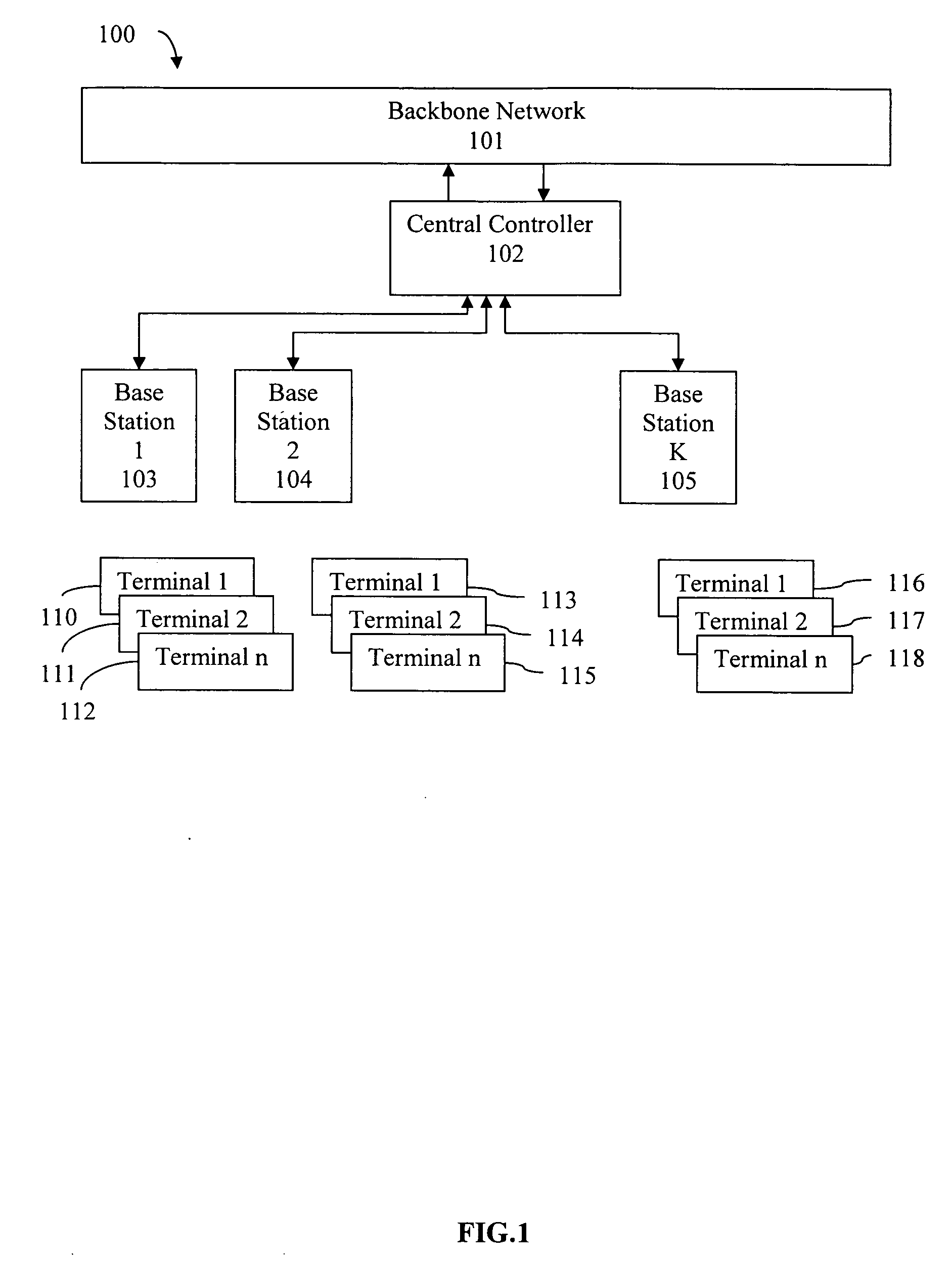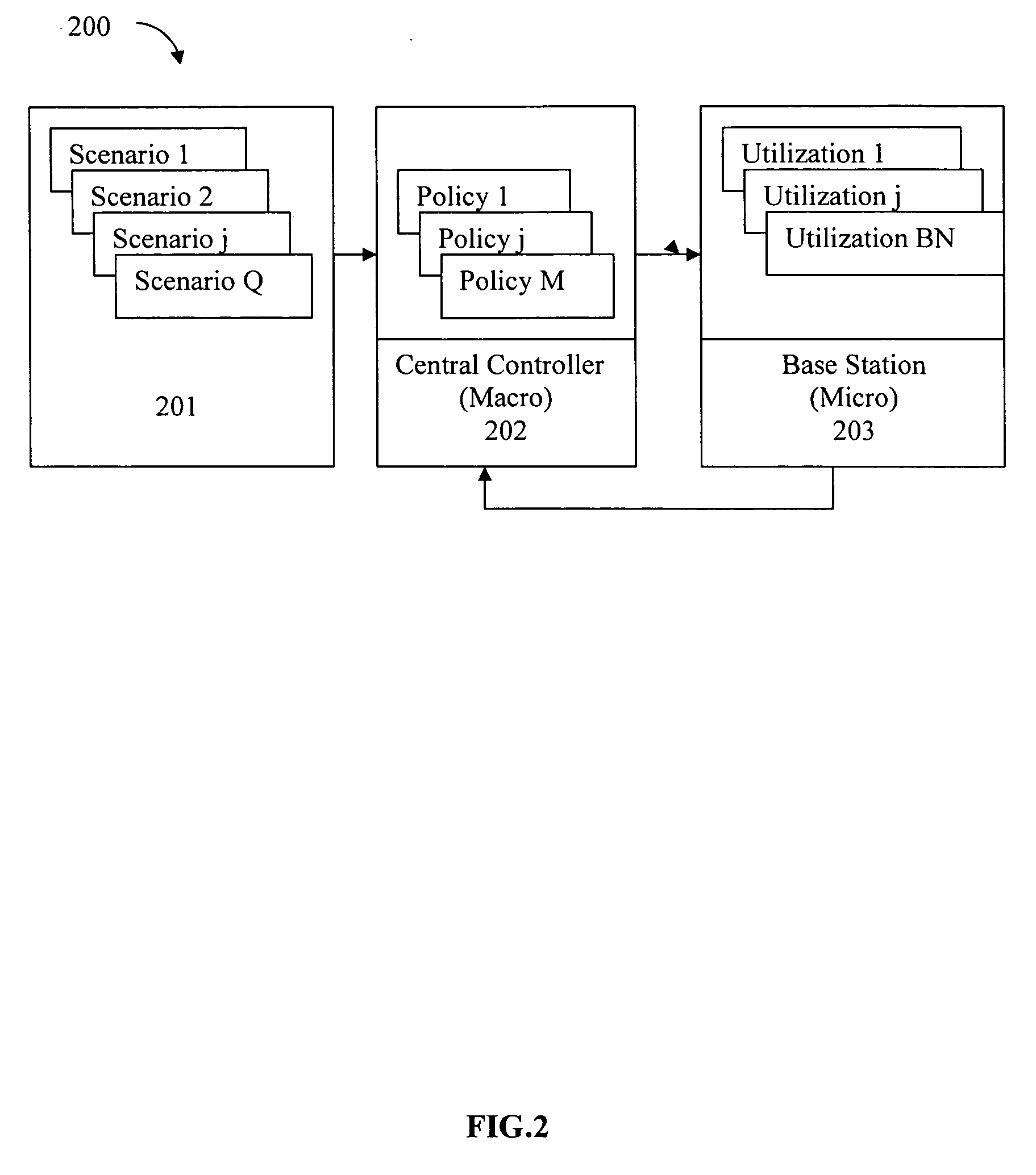Method and apparatus for network wide adaptive resource allocation for OFDMA/TDMA networks
a network and resource allocation technology, applied in the field of network wide adaptive resource allocation for ofdma/tdma networks, can solve problems such as disruption of communication in interference regions, and achieve the effect of maximizing the overall network throughpu
- Summary
- Abstract
- Description
- Claims
- Application Information
AI Technical Summary
Problems solved by technology
Method used
Image
Examples
Embodiment Construction
[0018]Proposed system 100 has a Central Controller 102, plurality of Base Stations 103-105, and plurality of Terminals 110-118 as entities. Central Controller is attached to the Backbone Network 101, and it captures the incoming traffic and routes to the base stations. Besides having the routing functionality, Central Controller does high-level resource management across the network for the base stations. Base stations are entities that has wired and wireless interface. They talk to terminals through their wireless interfaces. Each base station has a fixed amount of resource per frame and is required to distribute this resource to its terminals.
System and Method
[0019]In order to satisfy every traffic demand and network topology, a feed back control method 200 is proposed. The system diagram shown in FIG. 4 depicts that depending on the scenario 201 a particular policy 202 is selected by the central controller and that policy is updated with respect to the change in the scenario or o...
PUM
 Login to View More
Login to View More Abstract
Description
Claims
Application Information
 Login to View More
Login to View More - R&D
- Intellectual Property
- Life Sciences
- Materials
- Tech Scout
- Unparalleled Data Quality
- Higher Quality Content
- 60% Fewer Hallucinations
Browse by: Latest US Patents, China's latest patents, Technical Efficacy Thesaurus, Application Domain, Technology Topic, Popular Technical Reports.
© 2025 PatSnap. All rights reserved.Legal|Privacy policy|Modern Slavery Act Transparency Statement|Sitemap|About US| Contact US: help@patsnap.com



